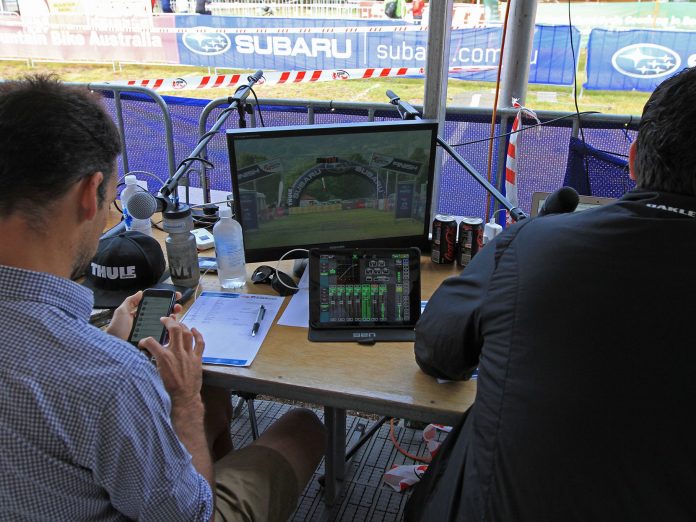Allen & Heath Qu and ME systems were chosen to manage sound reinforcement for the recent National Mountain Bike Championships in Australia.
Held in the southeastern state of Victoria, the event was run by Australian event and PA company DURT, with DURT MD Russell Baker describing its scale: “The location for a major mountain bike event can be the size of 10 football fields, there will be several concurrent events, each with their own audio requirements, plus briefing, meeting and conference areas which require audio but also minimal background noise. The trails can be upwards of eight square kilometres, and the audience, often well over 10,000 capacity, can be spread over several mountains, with local areas attracting their own large crowds all needing entertainment, race information and atmosphere.”
A Qu-32 was stationed in a control cabin, with AR2412 and AR0804 IO racks as two external connection points, an aerial farm and router on the roof, plus iPad and iPhone control to manage longer distance coverage. Though the Qu managed “multiple cable and wireless microphone systems”, longer distances and mountainous terrain meant that normal wireless was not always sufficient.
“Handheld radios, coming in through DI boxes and iPhones plugged straight into the board, were used to get live race reports back from the distant parts of the courses,” said Baker.
The FOH speaker feeds of up to 18 main speakers from six zone mixes were provided by the Qu system, alongside feeds to web and broadcast partners and mixes to control the ducking. TV, web and broadcast had their own dedicated commentary and interview mixes without music due to licensing issues, and a separate phase and delay adjusted music feed was provided to broadcast engineers to help cancel out microphone spill of background music. In each separate sport zone, the local commentators were able to duck the music in their area, whilst a ‘whole-of-event’ mix, with ducking control of all sources, was used for major items and as an emergency announcement system. As different events reached climactic stages, commentary was patched to the main event centre using scene changes.
“The whole system runs with minimal human intervention – mostly scene changes – for up to a week and is almost all controlled from iPads and iPhones,” explained Baker. “Without a person on the mixer 24/7, automated ducking is very important to keep the music level up for the crowd, while allowing the commentary to be heard clearly when needed.”
The ME system was used primarily for commentary and broadcast operators, enabling them to generate their own monitor mixes remote from the Qu-32 and as a PAFL system to check signal sources.






